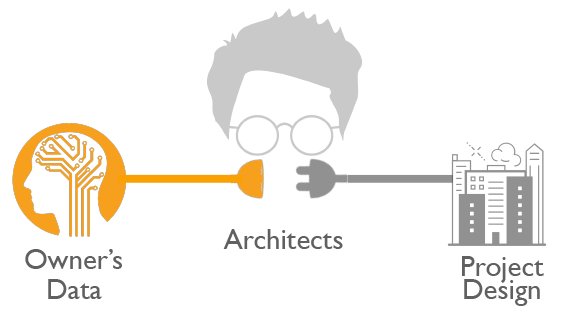How Does Architecture Adapt To Changing Technological Advancements?

Have you ever wondered how technology is changing the field of architecture? Today, we'll take a look at the top 4 technological trends that are revolutionizing the way we design and build structures. These trends are shaping the future of architecture, and are worthy of discussion for anyone interested in this field.
1. Building Information Modeling (BIM)
BIM is a digital model-based process used to create and manage information on a construction project. This technology allows architects, engineers, and construction professionals to create a virtual representation of a building and simulate its performance before it is built. With BIM, architects can collaborate with other professionals on the design of a project, and make changes in real time to improve its efficiency and functionality. The result is a more accurate design, reduced construction waste, and improved project timelines.
2. Virtual Reality (VR) and Augmented Reality (AR)
Virtual Reality and Augmented Reality are two technologies that are transforming the way architects present their designs. With VR, architects can create a 3D model of a building and allow clients to virtually tour the space, gaining a better understanding of how it will function. AR is also being used to superimpose digital information on top of the real world environment, providing clients with a more immersive experience of a space. These technologies allow architects to create more engaging and interactive presentations of their projects, helping clients to better visualize their designs.
3. 3D Printing
3D printing technology is changing the way architects prototype their designs. With this technology, architects can create physical models of their projects in a matter of hours, eliminating the need for expensive and time-consuming processes. Architects can also experiment with different designs and materials with ease, allowing them to fine-tune their concepts. 3D printing is also being used to create prefabricated building components, reducing construction costs and improving efficiency.
4. Sustainable Design
As concerns about climate change continue to grow, sustainability has become a major consideration in the field of architecture. Architects are using technology to create more sustainable designs, using tools like energy modeling to optimize building performance and reduce energy use. Buildings are being designed with features like green roofs, solar panels, and rainwater harvesting systems, which not only reduce their carbon footprint but also improve the quality of life for their inhabitants. The result is a more environmentally responsible architecture that is better suited to the needs of the planet and its inhabitants.
FAQs
Q. How is BIM changing the construction industry?
A. BIM is allowing architects, engineers, and construction professionals to collaborate more effectively on construction projects, reducing errors and improving efficiency. This technology is also facilitating the use of prefabricated components, reducing waste and construction costs.
Q. How are VR and AR being used in architecture?
A. Virtual and Augmented reality are being used to create more engaging and interactive presentations of architectural designs. With these technologies, architects can allow clients to virtually tour a space and visualize how it will look and function once it is built.
Q. How is 3D printing being used in architecture?
A. 3D printing technology is being used to create physical models of architectural designs quickly and easily. It is also being used to create prefabricated building components, reducing waste and construction costs.
Q. Why is sustainable design important in architecture?
A. Sustainable design is important in architecture because it helps to reduce the impact of buildings on the environment. It also improves the quality of life for building inhabitants, and can reduce energy and operating costs over the life of the building.
Conclusion
By embracing these technological trends, architects are able to create more efficient, accurate and sustainable designs. These trends are revolutionizing the way we build structures, and will continue to shape the future of architecture in the years to come.
Thanks for reading, and we hope you have gained a deeper understanding of how technology is changing the field of architecture!




Post a Comment for "How Does Architecture Adapt To Changing Technological Advancements?"